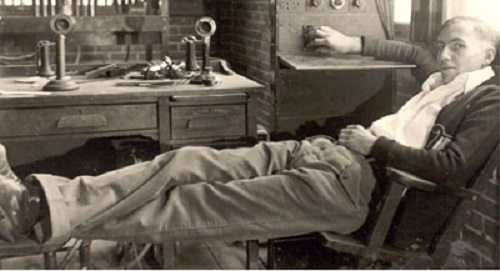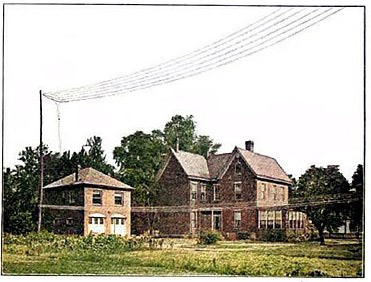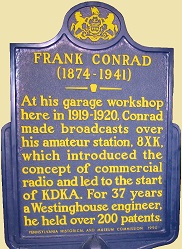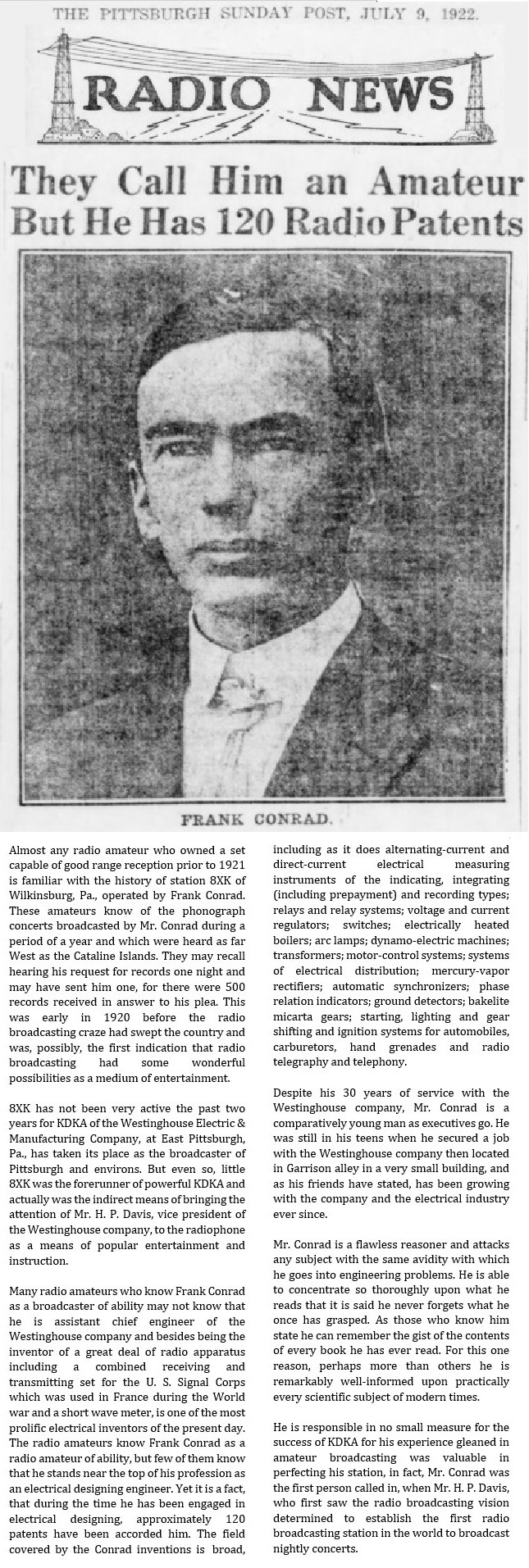Pre-1920

Frank Conrad reached the age of 40 before his interest in radio took hold. In 1915, because of a wager with a fellow Westinghouse engineer over the accuracy of his watch, he built his first receiver in his Wilkinsburg garage, to pick up the U.S. Navy’s time signal station, NAA, in Arlington, Virginia. He was fascinated by the various signals he could now hear. After passing a ten word per minute Morse code test, he was granted his first amateur license 8XK on August 1, 1916.
World War I soon intervened, and 8XK was suspended as were all amateur radio operations. But due to the combination of Westinghouse government radio development contracts and Conrad’s experiments, he was granted the callsign 2WM for his home, with 2WE assigned to the East Pittsburgh Westinghouse plant five miles away.
Conrad was a veritable fountain of ideas. His wartime contributions were little short of startling. He designed and tested for the Signal Corps some transmitters and receivers, and these had been a big success. Much of this testing had been done in Conrad’s garage.
After the war, most of the Westinghouse contracts dried up. RCA had taken over commercial radiotelegraphy in the United States as a virtual monopoly, so Westinghouse was cut off in this direction. What was there to do?
Conrad’s personal callsign 8XK was returned on October 1, 1919, and weekly broadcasts of music, talks, and sports scores were inaugurated on Friday night, October 17, 1919. Soon, 8XK became one of the best known amateur stations in the country.



